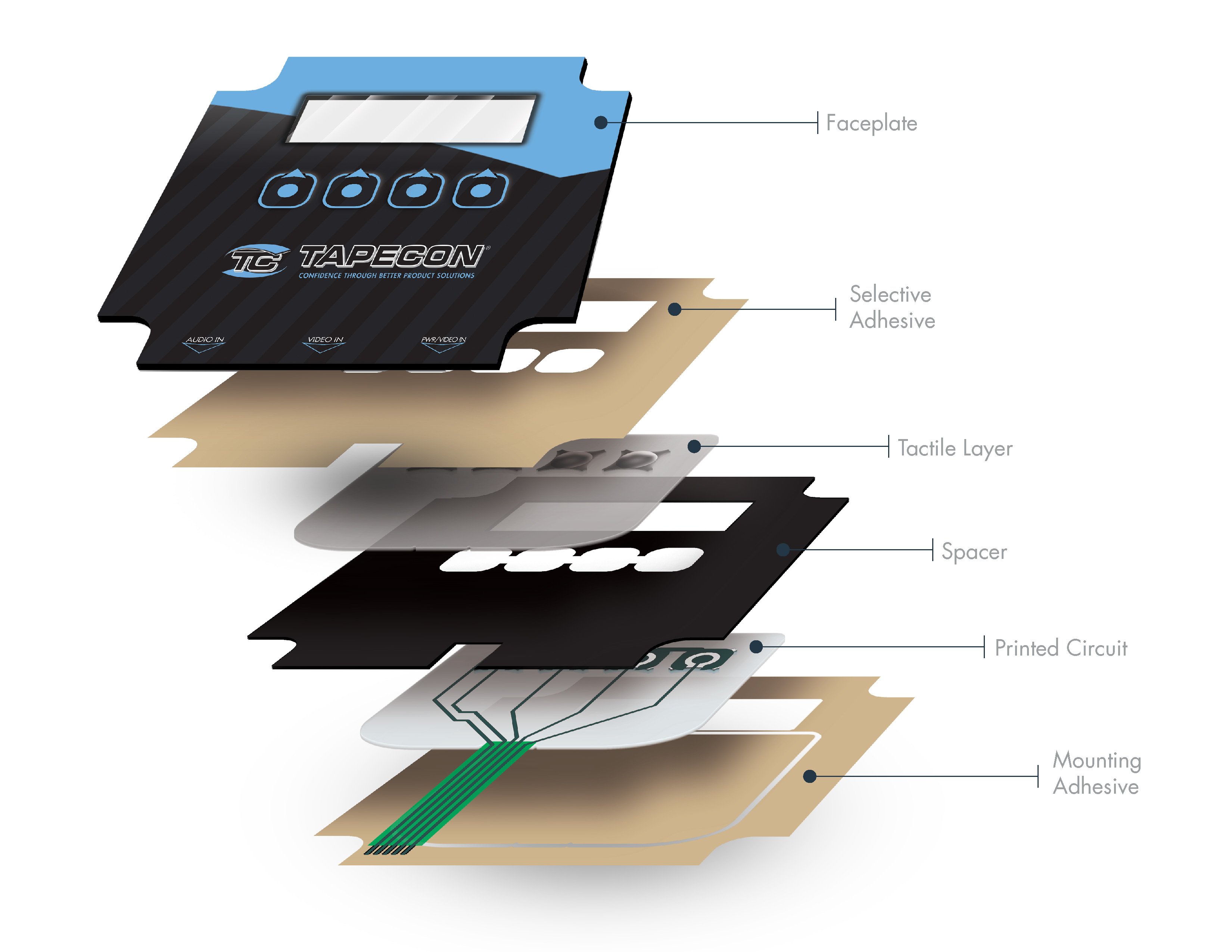Explore Different Types of Membrane Switch Technologies for Your Needs
Explore Different Types of Membrane Switch Technologies for Your Needs
Blog Article
How Membrane Switches Contribute to the Longevity of Electronic Control Panels
Membrane switches play a critical duty in boosting the resilience of electronic control panels, largely via their multi-layered building which offers reliable protection versus ecological variables such as dampness and dust. The lack of relocating components substantially reduces the possibility of mechanical failures, making membrane layer changes ideal for requiring applications.
Meaning of Membrane Switches

Membrane switches are developed to be slim and lightweight, making them appropriate for applications where room is restricted. They can be produced in numerous forms, dimensions, and colors, providing adaptability in layout that fulfills visual and functional requirements. Additionally, membrane switches can integrate different modern technologies, such as responsive feedback and LED indicators, boosting user experience.
Because of their building, membrane switches are commonly immune to dust, moisture, and basic wear, adding to their toughness sought after settings. Their seamless design not just facilitates easy cleaning however additionally decreases the threat of mechanical failing, making them a recommended selection for makers seeking trustworthy interface in their digital control panels.
Security Against Ecological Aspects
The style of membrane switches naturally gives a level of defense versus numerous environmental elements, which is vital for keeping capability in challenging conditions - Membrane Switch. These buttons are commonly built with layers of versatile products that shield interior elements from wetness, dust, and impurities. By enveloping the circuitry, membrane layer changes minimize the threat of short circuits and rust, which can considerably impair performance
In addition, the usage of robust adhesives and sealants throughout manufacturing enhances their resistance to ecological challenges. Membrane switches can endure exposure to chemicals and solvents, making them ideal for markets such as food processing and healthcare, where health and sanitation are vital. Their seamless surface area design additionally avoids the buildup of dirt and germs, helping with simpler cleansing and maintenance.
Temperature level fluctuations are another environmental worry, and membrane switches are crafted to function effectively throughout a variety of temperatures (Membrane Switch). This flexibility ensures that control panels stay functional in numerous settings, from industrial atmospheres to customer electronics
Impact on Individual Communication
Customer interaction with electronic control board is considerably affected by the design and performance of membrane layer buttons. These buttons provide a tactile user interface that boosts the total user experience, enabling for user-friendly navigating and control. Their responsive nature makes sure that customers obtain prompt feedback upon activation, which is important for tasks calling for accuracy and efficiency.
Additionally, the smooth surface area of membrane layer switches helps with simple cleaning and maintenance, promoting individual confidence in the reliability of the interface. This sanitation is particularly essential in settings where hygiene is critical, such as medical or food processing settings. Additionally, the portable Resources and light-weight layout of membrane layer switches over adds to the visual charm of control panels, urging customer involvement via a contemporary and smooth look.
Additionally, the assimilation of aesthetic components, such as printed icons and backlighting, helps customers quickly determine functions, reducing the learning contour connected with new devices. Because of this, users can operate tools better, resulting in boosted efficiency and satisfaction. In recap, membrane buttons play an essential role in improving individual interaction by incorporating performance, appearances, and simplicity of usage, eventually resulting in boosted functional efficiency.
Layout Versatility and Customization
Design flexibility and customization are essential facets of membrane switches, allowing suppliers to tailor digital control panels to details applications and individual needs. This flexibility permits the assimilation of different layout elements, such as colors, graphics, and appearances, which can improve the aesthetic appeal and individual involvement of the control panel.
Membrane layer buttons can be customized in shapes and size, accommodating a large array of devices and applications, from industrial machinery to customer electronic devices. This adaptability ensures that producers can develop user-friendly user interfaces that straighten with individual assumptions and functional demands. Furthermore, the capability to incorporate unique features such as backlighting or responsive responses even more boosts functionality, enabling an extra interactive experience.
Furthermore, the production procedure for membrane layer switches over supports the quick prototyping of layouts, making it possible for makers to repeat and improve their principles promptly. This capability not only increases the development timeline but also makes sure that the last item fulfills specific functional and aesthetic standards.

Cost-Effectiveness and Durability
Cost-effectiveness and durability are substantial benefits of membrane switches, making them an eye-catching choice for makers and end-users alike. These buttons are commonly cheaper to create than standard mechanical switches, mainly as a result of their streamlined manufacturing processes and the lowered variety of elements required. This cost benefit expands not only to initial manufacturing however also to long-term operational expenditures, as membrane layer switches often call for less maintenance and have a lower failing rate.
Moreover, the long life of membrane switches over contributes to their overall worth. Built from durable products, they are resistant to ecological elements such as moisture, dirt, and chemicals, which can result in early wear in other button types. The absence of useful source relocating parts decreases mechanical failure, permitting membrane layer switches to keep functionality over extended durations.
This longevity is especially advantageous in applications calling for consistent efficiency under demanding problems, such as medical gadgets and commercial equipment. Inevitably, the combination of cost-effectiveness and long life makes membrane layer switches a financially practical option for suppliers, browse around this web-site giving dependable solutions that withstand the test of time while optimizing budgetary considerations.
Conclusion
In verdict, membrane layer buttons dramatically boost the resilience of electronic control panels through their durable construction and safety attributes - Membrane Switch. On the whole, membrane layer switches over stand for a trustworthy and economical option for improving the longevity and capability of digital control systems.
Report this page